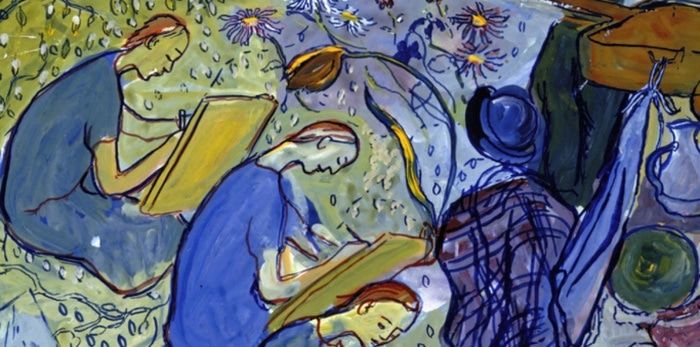Book Review | Charlotte Salomon: Leben? oder Theater?Drawing inspiration from a traumatic life
By Ruby Fischer
“SHE was like an overcast day in November,” recalls a school friend. “She lived in her own world of light, air and colours.”
Charlotte Salomon, whose birth centenary was celebrated last year, is one of the most prolific and enigmatic artists of the modern era. Born in Berlin, Salomon was 22 on the morning after Kristallnacht — the 1938 pogrom against Jews in nazi Germany — when her father Dr Albert Salomon was arrested.
She and her grandparents sought refuge in the home of Ottilie Moore, a US heiress who provided safe haven for young Jewish children at her Villa l’Ermitage in the French town of Villefranche-sur-Mer.
It was here that Salomon fell into a deep existential depression, out of which she saw just two possibilities — either succumb to the thoughts of suicide, whose promise of eternal quietude ultimately claimed all the women in her family, or defy the unbearable by embarking on “something quite insanely extraordinary.”
She chose the latter and spent the next year in feverish devotion to her painting, producing over 1,300 gouache images narrating the events of her personal history. The collection Life? Or Theatre? was recently published by Taschen and is an odyssey of experience that conjures the horror of the era as well as the nascent passions and affections of a wintry girl emerging into adulthood.
It feels at times like a series of Brechtian episodes, its operatic figures swathed in primary colours while other moments are delicate, whispered confessions in strokes of Prussian blue and throughout the theatre is the setting.
Salomon conceived the book as a Singspiel — a kind of painted cabaret populated by characters from her life, reimagined as absurd distortions of their real counterparts. Her stepmother, the opera singer Paula Lindberg, appears among the dramatis personae as Paulinka Bimbam, accompanied by Dr Singsang and Professor Klingklang — names that would be at home in any poem by Roald Dahl.
Among the extraordinary events depicted, perhaps the most significant is Salomon’s unflinching exploration of the suicides in her family. When the artist was just nine years old, her mother jumped out of a window in a fit of despair, promising to write letters from heaven.
The family, unable to bear the scandal, concealed the cause of Franziska Salomon’s death from Charlotte, who was led to believe her mother had succumbed to influenza. Her aunt and later her grandmother also committed suicide. This tragic repetition is reflected in the many lonely female figures depicted ascending to heaven or traversing the page to the depths of a dark lake.
German-Jewish women of the time made up the majority of suicides in urban areas. Faced with the rise of nazism and with it a brutal reassertion of a patriarchy in crisis, death alone offered respite. Her grandmother’s suffering, she writes, “was the suffering of the world.”
Salomon places her story, and that of her family, in an observatory. The distance allows her to examine the narrative, to fill in the gaps and shed light on the deformation and disfigurement of her past. And it may be that she pits life against the theatre, that most transient of art forms, in order to confront the reality of her own mortality.
Many images in Life? Or Theatre? are accompanied by handwritten overlays commenting on the illustrated events, marrying text and image to create what is essentially an early graphic novel. For Salomon, it turned out to be a precious document that would survive the horrors of the war though she, in the end, would not.
In October 1943, she and her husband were dragged from their homes and transported to Auschwitz, where it is believed she was executed that same day. She was five months pregnant. While tragic, it is important not to allow her fate to overshadow her monumental creation which is, at its core, a most ardent bid for life.


